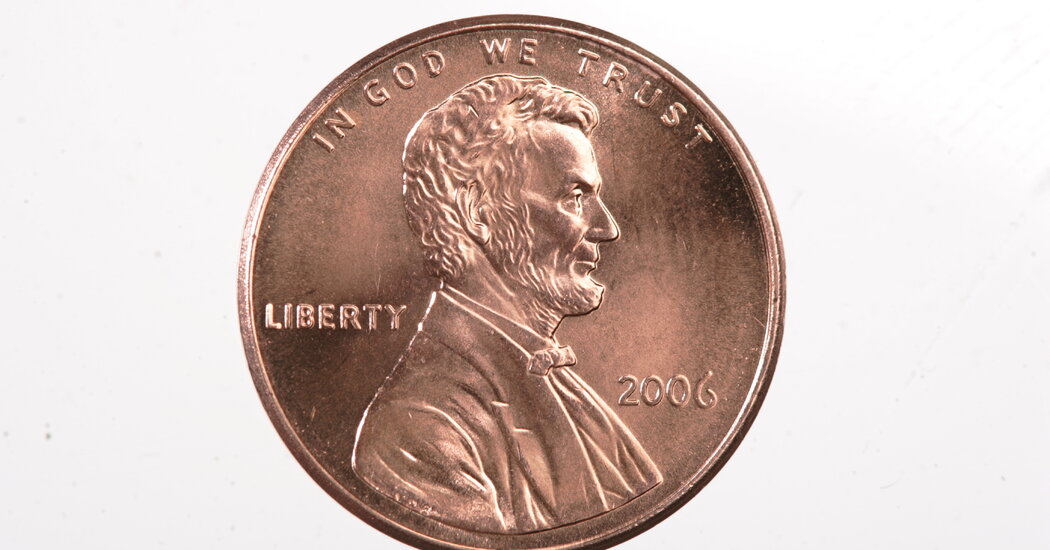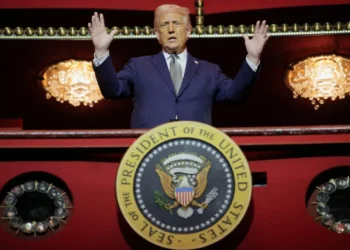The American penny died on Wednesday in Philadelphia. It was 232.
The cause was irrelevance and expensiveness, the Treasury Department said.
Nothing could be bought any more with a penny, not even penny candy. Moreover, the cost to mint the penny had risen to more than 3 cents, a financial absurdity that doomed the coin.
The final pennies were minted on Wednesday afternoon in Philadelphia. Top Treasury officials were on hand for its final journey. No last words were recorded
In its heyday, the penny had immense cultural impact. It was the going rate for thoughts. It was a symbol of frugality, saved and/or earned. It could sometimes be pretty and other times arrive from heaven. And how many ideas would never have come to light without a penny dropping?
When picked up, it was said to bring good luck for a 24-hour period, an assertion commonly made, but one that was never proven by any scientific double-blind studies.
On the darker side, a penny could undoubtedly be bad, especially when turning up.
It found its way into films (“Penny Serenade”) and songs (“Penny Lover”).
A foray into footwear, specifically loafers, was a huge success for many decades, and the shoe remains readily available today.
In comparison, about the best the nickel could do was be wooden.
The American penny was preceded in death by its smaller sibling, the half cent (1793-1857), and its cousin the Canadian penny (1858-2012). The British one-pence coin, born in the seventh century, somewhat incredibly, survives it.
The American penny was born in 1793 in Philadelphia. Its parent was Alexander Hamilton, the first secretary of the Treasury, who was the chief author of the Coinage Act, which birthed the penny and its siblings.
The penny went through several reinventions. At birth, it depicted Lady Liberty. In 1909, Abraham Lincoln took over the front for the rest of its life.
The reverse of the coin was where it showed more variety, with a 15-link chain, a wreath, wheat stalks and the Lincoln Memorial all getting moments. In 2009, the variations increased, with a log cabin and other designs. Most recently it depicted a Union shield.
The penny was at first strictly a copper coin. In 1943, because of hunger for copper for the war effort, it changed for a year into zinc-coated steel. Starting in 1982, and until its death, the penny, so associated with its copper color, was in fact 97.5 percent zinc and merely 2.5 percent copper plating.
As the penny entered its long decline, it more and more frequently found itself casually tossed into a jar in someone’s home or ignominiously dropped in a “Take a Penny” tray at retailers. Calls grew for it to be euthanized, citing its obsolescence. In the end, President Trump signed its death warrant in February.
Even after death, the penny will not vanish for a while longer. There are some 250 billion pennies in circulation and they will be out there, gathering dust, or maybe, very, very rarely, being used to help pay for something. As the last pennies slowly disappear, businesses will have no choice but to round transactions to the nearest nickel when dealing with cash.
With the penny’s demise, coin enthusiasts’ worried eyes now turn toward its longtime associate, the nickel. Its purchasing power has also shrunk to nearly nothing, and it costs more than a dime to make.
Victor Mather, who has been a reporter and editor at The Times for 25 years, covers sports and breaking news.
The post The Penny Dies at 232 appeared first on New York Times.




